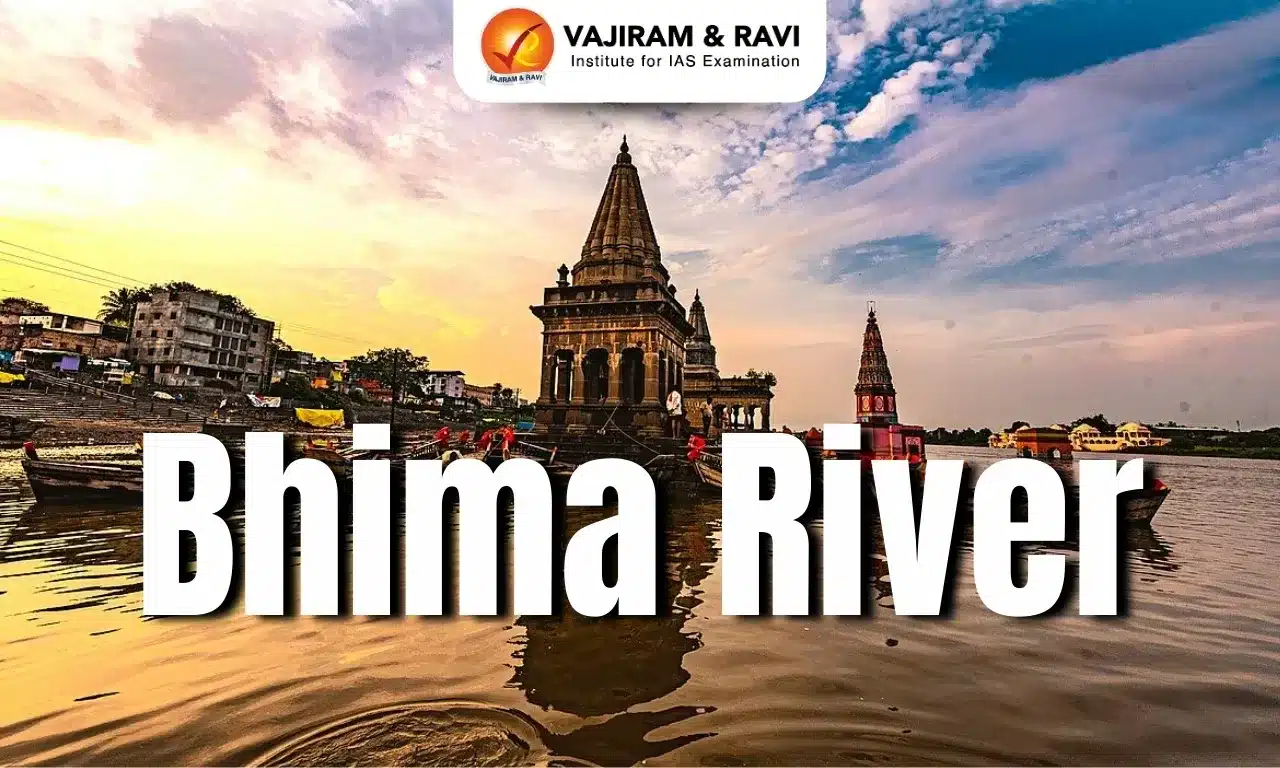Bhima River Latest News
Continuous heavy rains in Kalaburagi and parts of Maharashtra have led to a sharp rise in the water levels of the Bhima River recently, triggering widespread flooding in several villages.
About Bhima River
- The Bhima River (also known as the Chandrabagha River) is the largest tributary of the Krishna River.
- Course:
- It originates near Bhimashankar Temple in the Bhimashankar hills on the western side of the Western Ghats in Pune District of Maharashtra.
- Bhima flows southeast through the states of Maharashtra, Karnataka, and Telangana.
- It merges into the Krishna River in Karnataka’s Raichur district.
- Total Length: 861 km
- The Bhima drainage area is defined by the Western Ghats (west), the Balaghat Range (north), and the Mahadeo Hills (south).
- The total basin area of the river is 48,631 sq.km., out of which 75 percent lie in the state of Maharashtra. It is known as Sahyadri in Maharashtra.
- It runs in a well-entrenched valley, and its banks are heavily populated.
- Its water level is marked by monsoonal changes.
- Tributaries: Major tributaries are the Indrayani River, Mula River, Mutha River, and Pavana River.
- Throughout history, the Bhima River has been a lifeline for the Maratha Empire and the region surrounding Pune, with many historic battles and events occurring near its banks.
- The area around the Bhima River, particularly near the city of Pune, saw extensive trade and commerce routes, making it a vital hub during medieval times.
- Pandharpur is an important pilgrimage centre located on the right bank of the Bhima River.
Source: HANS
Last updated on November, 2025
→ Check out the latest UPSC Syllabus 2026 here.
→ Join Vajiram & Ravi’s Interview Guidance Programme for expert help to crack your final UPSC stage.
→ UPSC Mains Result 2025 is now out.
→ UPSC Notification 2026 is scheduled to be released on January 14, 2026.
→ UPSC Calendar 2026 is released on 15th May, 2025.
→ The UPSC Vacancy 2025 were released 1129, out of which 979 were for UPSC CSE and remaining 150 are for UPSC IFoS.
→ UPSC Prelims 2026 will be conducted on 24th May, 2026 & UPSC Mains 2026 will be conducted on 21st August 2026.
→ The UPSC Selection Process is of 3 stages-Prelims, Mains and Interview.
→ UPSC Result 2024 is released with latest UPSC Marksheet 2024. Check Now!
→ UPSC Prelims Result 2025 is out now for the CSE held on 25 May 2025.
→ UPSC Toppers List 2024 is released now. Shakti Dubey is UPSC AIR 1 2024 Topper.
→ UPSC Prelims Question Paper 2025 and Unofficial Prelims Answer Key 2025 are available now.
→ UPSC Mains Question Paper 2025 is out for Essay, GS 1, 2, 3 & GS 4.
→ UPSC Mains Indian Language Question Paper 2025 is now out.
→ UPSC Mains Optional Question Paper 2025 is now out.
→ Also check Best IAS Coaching in Delhi
Bhima River FAQs
Q1. The Bhima River is the largest tributary of which river?+
Q2. The Bhima River originates from which location?+
Q3. The Bhima River flows through which Indian states?+
Q4. What is the total length of the Bhima River?+
Tags: bhima river

















